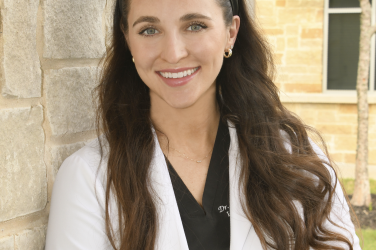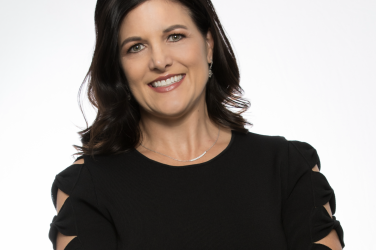
Q&A
Hair Loss
What are the most common causes of hair loss in women, and how can they be addressed?
Androgenetic (male pattern/female pattern) hair loss is the most common. Typically, you’ll see a widening of your part or just a diffused thinning. The hairline stays intact, but you’ll see sparseness right behind the hairline and temples, especially with postpartum. The main culprit for hormonal hair loss is DHT (Dihydrotestosterone), which blocks your follicles from receiving blood flow and nutrients. To combat DHT, use a supplement or a topical that contains DHT-inhibiting properties. I’ve designed a line of products with a manufacturer who has been in the business for more than 30 years. These are available in my salon or from my website.
Can certain hairstyles or haircare practices contribute to hair thinning, and how can one prevent this?
Yes. Most people rip out their ponytail holder or yank their brush through, but that will break hair and cause unnecessary shedding. Slow down and detangle your hair from the end, working your way to the roots. Having a consistent routine of cleansing and conditioning is also important. Get your hair trimmed at least quarterly. Avoid hairstyles that pull too tight. If you feel tension and traction, your hairstyle is probably causing thinning.
What are the early signs of scalp conditions that should not be ignored?
The most common scalp conditions are psoriasis, seborrheic dermatitis, and dandruff. Early signs would be a constant itching and sore bumps, especially with seborrheic dermatitis. Psoriasis looks like little pieces of snow. Dermatitis looks more like bigger clumps or scales, and underneath it could be inflamed and sore to the touch. The first step in treatment is to increase the frequency of cleansing. The scalp is an extension of our skin. Imagine if we didn’t wash our face or our bodies for a week or two. Over-the-counter medicated shampoos can help and even sometimes gentle exfoliation once a week. Psoriasis is an autoimmune condition for which there is no cure. Seborrheic dermatitis typically is caused from your diet or stress. Eating a Mediterranean diet can help inflammation. Our sebaceous glands sit right next to the hair as it’s coming through the follicle. If those glands get overactive, it causes irritation on the scalp and the scalp environment.
How does diet affect hair and scalp health, and what nutrients are vital for maintaining healthy hair?
Diet plays a huge role in the health of our hair, skin, and our nails. When we eat, our body will take the nutrients that it needs and then whatever is left over, it gives to the hair. If you don’t have a balanced diet, then your hair may start getting brittle or dry and more easily shed. Make sure you have enough vitamin B6, iron, zinc, biotin, and folic acid in your diet and if not, take supplements. To find out your deficiencies as it pertains to your hair, I offer an epigenetic hair follicle analysis, which you can access at my salon or on my website.
About The Expert

Melissa Mallam
Pampered Tresses
Driven to empower you to embrace your natural beauty, Melissa’s lifelong passion for hair is deeply personal. From her early days in Nigeria, watching a stylist across the street from her home, to practicing on her grandmother’s hair, her journey has been fueled by a love for natural beauty and the art of hair care.










